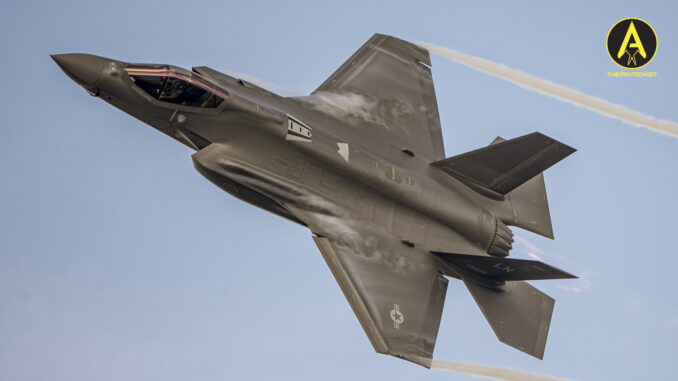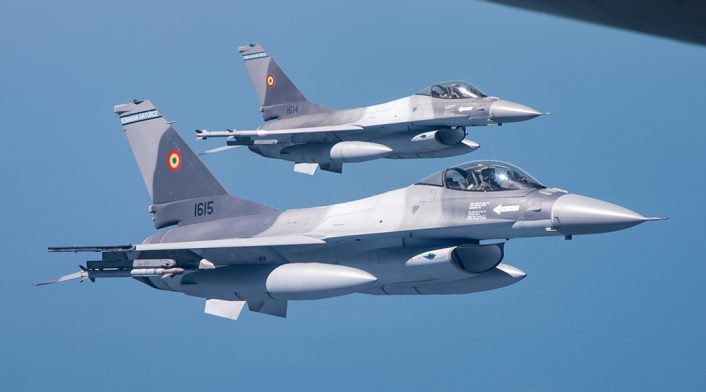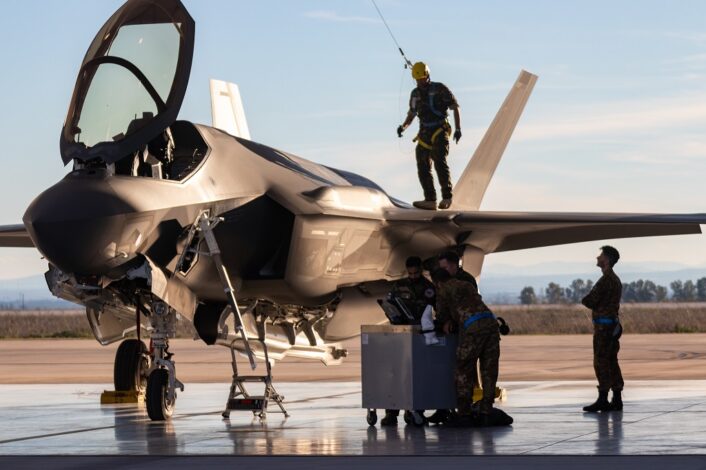U.S. State Department Approves $7.2B Sale Of F-35 Jets To Romania

The Foreign Military Sale’s approval comes after Romania announced the plan to acquire 32 F-35s to replace the F-16 fleet in the 2030s.
The U.S. State Department has approved the Foreign Military Sale (FMS) requested by Romania for the acquisition of the F-35 Lightning II. Romania will get 32 aircraft, a spare engine and related equipment for $ 7.2 billion (€ 6.5 billion) as part of a government-to-government deal which has been defined as the most expensive in Romania’s history.
The FMS notification includes a list of non-MDE (Major Defense Equipment) items which will be included, such as secure communications, spare part, test devices and various support equipment. Interestingly, no weapons were mentioned in the notification, although in the last few months Foreign Military Sales were approved for the AIM-9X and AIM-120C-8.
In September, Romania announced plans to buy 32 F-35s from Lockheed Martin in a deal which includes logistics, training services, flight simulators, and weapons. Defence Minister Angel Tilvar stated that the first planes would not be delivered before 2030.
The FMS notification did not provide details about the start of the deliveries. Also, it is currently unknown if the aircraft will be produced in Fort Worth, Texas, in Cameri, Italy, or a mix of both.
“The proposed sale will improve Romania’s capability to meet current and future threats by further equipping it to conduct self-defense and regional security missions while enhancing interoperability with the United States and other NATO members,” said the State Department, later adding that it will improve “the security of a NATO Ally that is an important force for political and economic stability in Europe.”
Initially, when the plan was submitted to the government, the deal was expected to be worth $6.5 billion. The deal is one of the consequences of the increase of the defence spending to 2.5% of gross domestic product this year in response to Russia’s invasion of Ukraine (with whom Romania shares a 650km border).

The acquisition plan
Earlier this summer, Defense Romania mentioned the F-35 program is currently in the Letter of Offer and Acceptance (LOA) phase, with Romania awaiting the American response expected this fall, possibly referring to the now approved FMS case. Following Washington’s response, more technical, financial, and chronological details will be known. In any case, the program will be the most expensive in Romania’s history.
By the time the first F-35A aircraft are delivered, the Romanian Air Force will operate three F-16 squadrons, at Câmpia Turzii and Fetesti Air Base. Romania also hopes to get 16 additional F-35s later, however a timeline is currently not available.
Last year, Bucharest bought 32 second-hand F-16 Block 20 fighter jets from Norway, in a transaction worth 400 million USD, adding to the 17 F-16A/B Block 15 Mid-Life Upgrade (MLU) fighters, acquired from Portugal in 2016 and delivered until 2021. The Romanian Air Force has, so far, received nine of the additional 32 aircraft; the plan calls for the entire batch to be delivered by the end of 2025.
Last year, another FMS was also approved for the modernization of these 32 F-16s, with a total cost of $105 million. These F-16 are said to have a remaining service life of ten years, with the Romanian armed forces hoping to have the F-35 operational in the 2030s as the F-16s exhaust their remaining service life.
In May 2024, the US administration approved also the sale of up to 300 AIM-9X Sidewinder AAMs (Air-to-Air Missiles), 40 AIM-9X Sidewinder Block II Tactical Missile Guidance Units, 40 AIM-9X Sidewinder Block II Tactical Missile Guidance Units; 40 AIM-9X Sidewinder Block II Captive Air Training Missiles (CATM); and 20 AIM-9X Sidewinder Block II CATM Guidance Units to equip the F-16 fighter jets in a contract valued at 340.8 million USD.
In August, another FMS was approved, this time for up to 186 AIM-120C-8 Advanced Medium Range Air-to-Air Missiles (AMRAAM) and four guidance sections, for an estimated total cost of $592 million. No explicit reference to the F-16 or the F-35 was made, as well as the training variants of the weapon.
In 2023, the Romanian Air Force retired, after 61 years of service, the iconic MiG-21 LanceR, the longest-lived fighter aircraft in the history of the service, flew its final flight mission at Boboc, in eastern Romania. In less than ten years, the service might field a 5th generation aircraft.

The increasing F-35 presence in Europe
The approval of the FMS to Romania follows the deal for the F-35’s acquisition by Greece in July 2024. The 5th generation aircraft has been so far been chosen by the United States, Britain, Italy, the Netherlands, Canada, Australia, Denmark, Norway, Israel, Japan, South Korea, Belgium, Poland, Singapore, Finland, Switzerland, Germany, the Czech Republic, Greece and Romania, confirming the F-35 as the preferred fighter for NATO allies and international partners.
To date, the F-35 operates from 32 bases worldwide, with 10 nations flying F-35s on home soil. Nearly 1,000 aircraft are operational, amassing over 860,000 flight hours fleet-wide. And some partners are also considering expanding their current fleets. By the 2030s, over 600 F-35s will be operational across more than 10 European countries.
“The F-35 has been one of the most effective integration tools for NATO since the end of the Cold War,” said Gen. James Hecker, Commander, U.S. Air Forces in Europe and Africa.
The F-35 will allow the interoperability not only in the air, but also on the ground. In fact, many exercises in Europe demonstrated ground personnel working not only on the own aircraft, but also on foreign ones in what is called cross-servicing.
“I think it’s really a warfighting imperative to be able to do that, there might be times when a US F-35 has to divert to another airbase, or maybe we can even plan on going to another airbase and we don’t have the maintenance or the equipment to go with them”, said Gen. Hecker in 2022. “We’re trying to make it interoperable, so if any F-35 nation can work with any F-35, no matter what nation it comes from, it can work on it, not just refuel it, but rearm it as well.



Ingen kommentarer:
Legg inn en kommentar
Merk: Bare medlemmer av denne bloggen kan legge inn en kommentar.